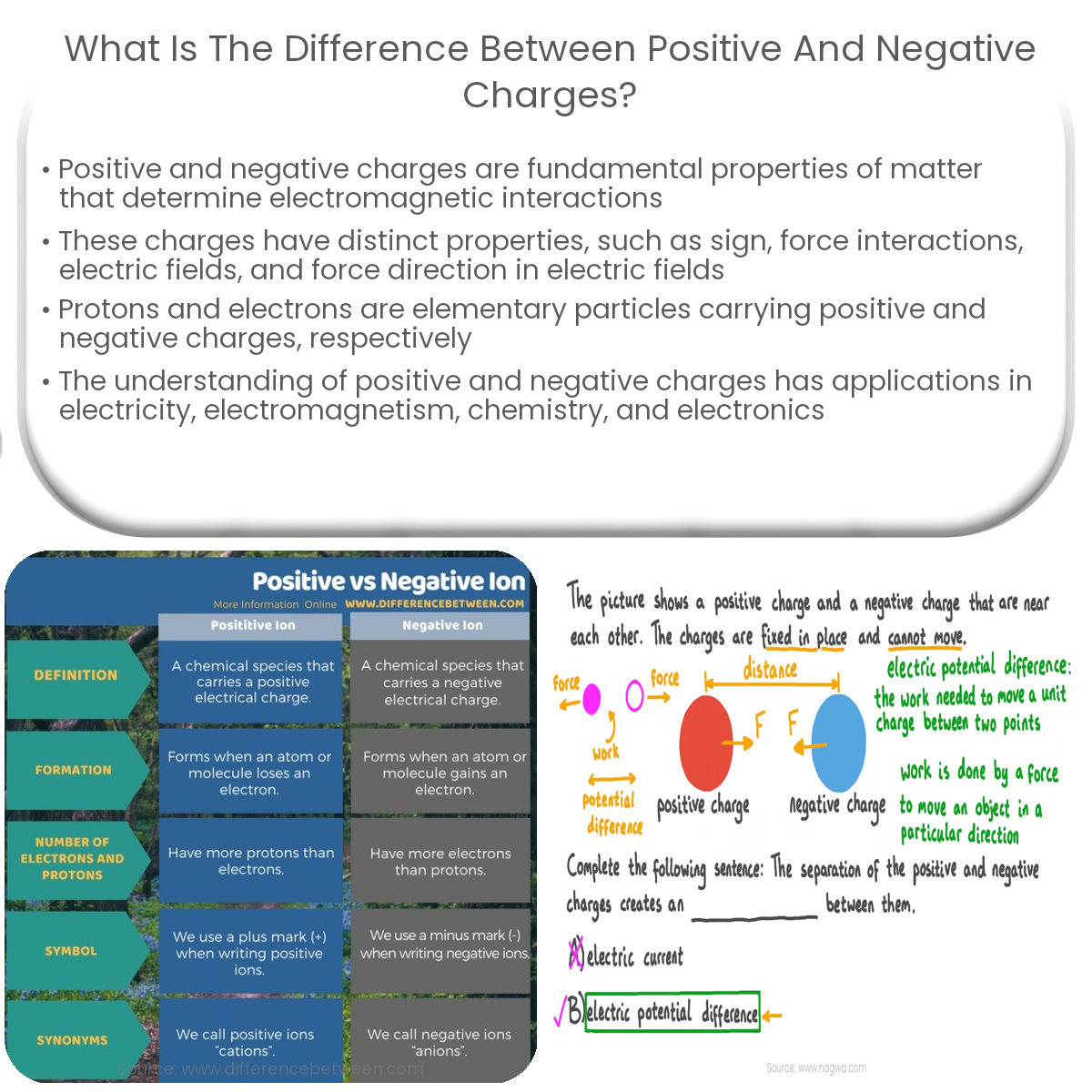Positive and negative charges differ in sign, force interactions, electric fields, and force direction when subjected to external electric fields.
Introduction to Positive and Negative Charges
Positive and negative charges are fundamental properties of matter that determine the behavior of particles and objects in electromagnetic interactions. This article highlights the differences between these two types of electric charges.
Properties of Positive and Negative Charges
Positive and negative charges have distinct properties that affect their behavior in various contexts:
Sign: Positive charges are assigned a positive sign (+), while negative charges have a negative sign (-). This distinction helps describe the interactions between charged particles.
Force Interactions: In electrostatic interactions, like charges repel each other, and opposite charges attract. Positive charges repel other positive charges, and negative charges repel other negative charges. However, positive and negative charges attract each other.
Electric Fields: Charged particles create electric fields that influence other charged particles in their vicinity. Positive charges create electric fields radiating outward, while negative charges create electric fields converging inward.
Force Direction in Electric Fields: In an external electric field, positive charges experience a force in the direction of the field, while negative charges experience a force opposite to the field direction.
Elementary Particles Carrying Positive and Negative Charges
The most common elementary particles carrying electric charges are protons and electrons:
Protons: Positively charged particles found in atomic nuclei. Each proton carries a single elementary charge (+e), approximately +1.6 x 10-19 Coulombs (C).
Electrons: Negatively charged particles that orbit atomic nuclei. Each electron carries a single elementary charge (-e), approximately -1.6 x 10-19 Coulombs (C).
Charge Conservation and Transfer
In any process involving electric charges, the total charge remains conserved. Charges are not created or destroyed but transferred or redistributed among objects. When objects become charged through mechanisms like friction, conduction, induction, or ionization, one object gains positive charge (loses electrons), and the other gains negative charge (gains electrons).
Applications and Implications
The differences between positive and negative charges have various implications and applications in everyday life and scientific contexts:
Electricity: Flow of electric charges, primarily electrons, powers numerous devices and appliances.
Electromagnetism: The relationship between electric charges and magnetic fields, leading to electric motors, generators, and transformers.
Chemistry: Redistribution of electrons in chemical reactions, resulting in charged particles or molecules, such as ions.
Electronics: Manipulation of electric charges in semiconductor materials to create electronic components, like transistors and integrated circuits.



